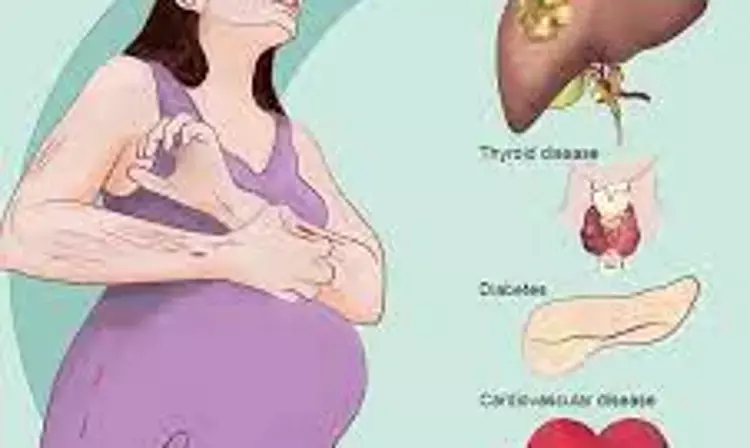- Home
- Medical news & Guidelines
- Anesthesiology
- Cardiology and CTVS
- Critical Care
- Dentistry
- Dermatology
- Diabetes and Endocrinology
- ENT
- Gastroenterology
- Medicine
- Nephrology
- Neurology
- Obstretics-Gynaecology
- Oncology
- Ophthalmology
- Orthopaedics
- Pediatrics-Neonatology
- Psychiatry
- Pulmonology
- Radiology
- Surgery
- Urology
- Laboratory Medicine
- Diet
- Nursing
- Paramedical
- Physiotherapy
- Health news
- Fact Check
- Bone Health Fact Check
- Brain Health Fact Check
- Cancer Related Fact Check
- Child Care Fact Check
- Dental and oral health fact check
- Diabetes and metabolic health fact check
- Diet and Nutrition Fact Check
- Eye and ENT Care Fact Check
- Fitness fact check
- Gut health fact check
- Heart health fact check
- Kidney health fact check
- Medical education fact check
- Men's health fact check
- Respiratory fact check
- Skin and hair care fact check
- Vaccine and Immunization fact check
- Women's health fact check
- AYUSH
- State News
- Andaman and Nicobar Islands
- Andhra Pradesh
- Arunachal Pradesh
- Assam
- Bihar
- Chandigarh
- Chattisgarh
- Dadra and Nagar Haveli
- Daman and Diu
- Delhi
- Goa
- Gujarat
- Haryana
- Himachal Pradesh
- Jammu & Kashmir
- Jharkhand
- Karnataka
- Kerala
- Ladakh
- Lakshadweep
- Madhya Pradesh
- Maharashtra
- Manipur
- Meghalaya
- Mizoram
- Nagaland
- Odisha
- Puducherry
- Punjab
- Rajasthan
- Sikkim
- Tamil Nadu
- Telangana
- Tripura
- Uttar Pradesh
- Uttrakhand
- West Bengal
- Medical Education
- Industry
Intrahepatic cholestasis of pregnancy linked with early delivery but low stillbirth rate

Intrahepatic cholestasis of pregnancy linked with early delivery but low stillbirth rate suggests a new study published in the American Journal of Obstetrics and Gynecology
Intrahepatic cholestasis of pregnancy (ICP) is associated with a 4 to 10-fold increase in the risk of stillbirth in the absence of intervention, leading to recommendations for antenatal assessment, ursodiol use, and often preterm or early term delivery. The objective of this study was to determine if current management strategies for ICP mitigate this elevated risk of stillbirth at a population level.
This is a retrospective cohort study using the 2015-2020 National Readmissions Database, an administrative database developed by the United States Agency for Healthcare Research and Quality. We identified delivery hospitalizations, gestational age at delivery, occurrence of ICP and stillbirth, and comorbid conditions using International Classification of Diseases diagnosis and procedure codes. We compared timing of delivery and stillbirth rates for pregnant patients with ICP versus those without ICP at the time of delivery hospitalization.
Results
Researchers identified a cohort of 9,987,705 delivery hospitalizations in the National Readmissions Database, corresponding to a weighted national estimate of 18,609,207 births; of these, 152,040 (0.8%) were noted to have an ICP diagnosis. Patients with ICP were older, with small differences in comorbidities such as a higher rate of gestational diabetes when compared to patients without an ICP diagnosis at delivery hospitalization. Overall rates of stillbirth were lower among those with ICP than those that did not carry that diagnosis (252 vs. 386 per 100,000 deliveries, risk difference 133 fewer per 100,000 deliveries (95% CI: 98 to 170); a finding that persisted after adjustment for insurance status, socioeconomic factors, and comorbid conditions (risk difference: 160 fewer stillbirths per 100,000 deliveries, 95% CI: 127-194). Furthermore, although ICP patients were more likely to deliver preterm than those without ICP (30.1% vs. 9.3%, p<0.001), increased rates of stillbirth were not noted at any point after stratification of the cohort by gestational age at delivery.
Patients with ICP diagnosis codes delivered earlier than those without a coded ICP diagnosis, but the percentage of births affected by stillbirth was lower, even when stratifying for gestational age at birth. These results may provide reassurance to patients receiving an ICP diagnosis that current management does mitigate stillbirth risk in ICP.
Reference:
Miriam L. Estin, Ms. Alexa I.K. Campbell, Virginia Y. Watkins, Sarah K. Dotters-Katz, Carla W. Brady, Jerome J. Federspiel. Risk of Stillbirth in US Patients with Diagnosed Intrahepatic Cholestasis of Pregnancy. American Journal of Obstetrics and Gynecology. Published:June 20, 2023DOI:https://doi.org/10.1016/j.ajog.2023.06.036
Keywords:
Intrahepatic, cholestasis, pregnancy, linked, early, delivery, low, stillbirth rate, American Journal of Obstetrics and Gynecology, Miriam L. Estin, Ms. Alexa I.K. Campbell Virginia Y. Watkins, Sarah K. Dotters-Katz, Carla W. Brady, Jerome J. Federspiel
Dr. Shravani Dali has completed her BDS from Pravara institute of medical sciences, loni. Following which she extensively worked in the healthcare sector for 2+ years. She has been actively involved in writing blogs in field of health and wellness. Currently she is pursuing her Masters of public health-health administration from Tata institute of social sciences. She can be contacted at editorial@medicaldialogues.in.
Dr Kamal Kant Kohli-MBBS, DTCD- a chest specialist with more than 30 years of practice and a flair for writing clinical articles, Dr Kamal Kant Kohli joined Medical Dialogues as a Chief Editor of Medical News. Besides writing articles, as an editor, he proofreads and verifies all the medical content published on Medical Dialogues including those coming from journals, studies,medical conferences,guidelines etc. Email: drkohli@medicaldialogues.in. Contact no. 011-43720751


